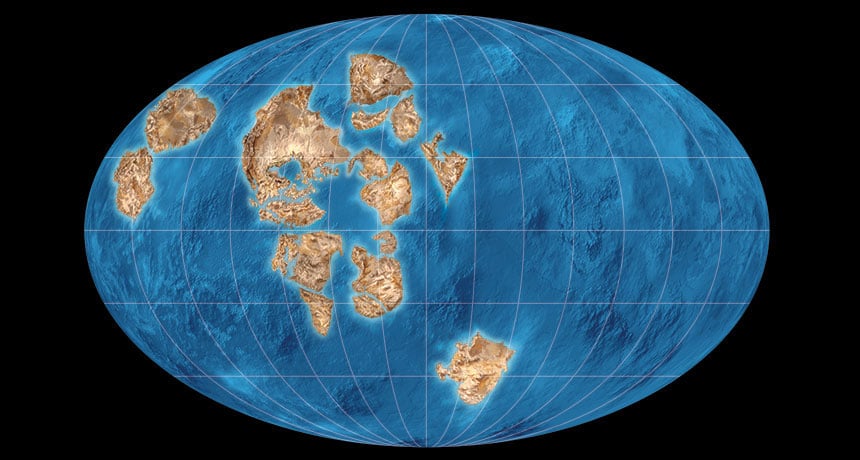Many significant events have shaped our globe. The spectacular trajectory of biological evolution is vividly documented by the fossil record, from the Cambrian explosion around 540 million years ago, when most animal forms originated through the rise and fall of the dinosaurs. What is the boring billion, and how does it affect our earth?
Geologists labeled Earth’s middle age the “boring billion.” It lasted between 1,800 and 800 million years and was long considered a time when little happened on Earth in terms of biological evolution, climate, ocean, and atmospheric chemistry.
The Boring Billion
In 1995, geologists Roger Buick, Davis Des Marais, and Andrew Knoll examined the apparent absence of important biological, geological, and climatic events throughout the Mesoproterozoic era, which lasted from 1.6 to 1 billion years ago or Gya, and labeled it the dullest period in Earth’s history. Paleontologist Martin Brasier proposed the name Boring Billion to describe the period between 2 and 1 Gya, marked by geochemical stasis and glacial immobility.
In 2013, geochemist Grant Young coined the term Barren Billion to describe a period of apparent glacial stagnation and lack of carbon isotope excursions between 1.8 and 0.8 Gya.
In 2014, geologists Peter Cawood and Chris Hawkesworth coined the phrase Earth’s Middle Ages to describe the period between 1.7 and 0.75 Gya due to a lack of evidence of tectonic movement.
The Boring Billion is generally widely regarded as lasting around 1.8 to 0.8 Gya in the Proterozoic eon, namely the Mesoproterozoic. The Boring Billion is marked by geological, climatic, and, for the most part, evolutionary stability and nutritional scarcity.
The emergence of oxygenic photosynthetic cyanobacteria and the resulting Huronian glaciation or Snowball Earth, production of the UV-blocking ozone layer, and oxidation of numerous metals caused the Great Oxygenation Event in the time leading up to the Boring Billion.
The disintegration of the supercontinent Rodinia during the Tonian around the 1000–720 Ma era, a second oxygenation event, and another Snowball Earth in the Cryogenian period ended the Boring Billion oxygen levels. (Source: National Library of Medicine)
Different Lifeforms During the Boring Billion
Low nutrient supply may have resulted in increasing photosymbiosis. This is when one organism is capable of photosynthesis while the other metabolize the waste product among prokaryotes like bacteria and archaea and the origin of eukaryotes.
Bacteria, Archaea, and Eukaryota, are the three domains with the highest taxonomic ranking.
Eukaryotes are separated from prokaryotes by the presence of a nucleus and membrane-bound organelles, and they comprise nearly all multicellular creatures. (Source: National Library of Medicine)
Prokaryotes
Prokaryotes were the dominant life forms throughout the Boring Billion. Anoxygenic cyanobacteria are assumed to have been the primary photosynthesizers in the seas, metabolizing the plentiful H2S. (Source: National Library of Medicine)
Eukaryotes
Eukaryotes may have arisen around the beginning of the Boring Billion, coinciding with the accretion of Columbia, which could have somehow increased oceanic oxygen levels. By this period, multicellular eukaryotes may have emerged, with the oldest purported fossil evidence going back to the Great Oxygenation Event with jellyfish-like Francevillian biota. (Source: National Library of Medicine)
